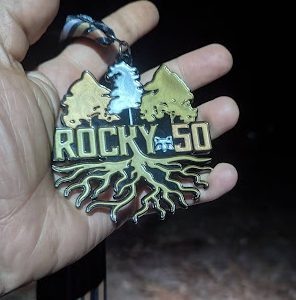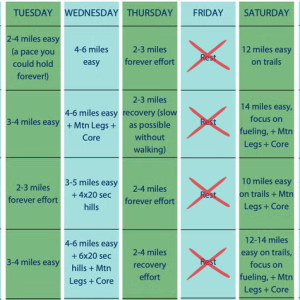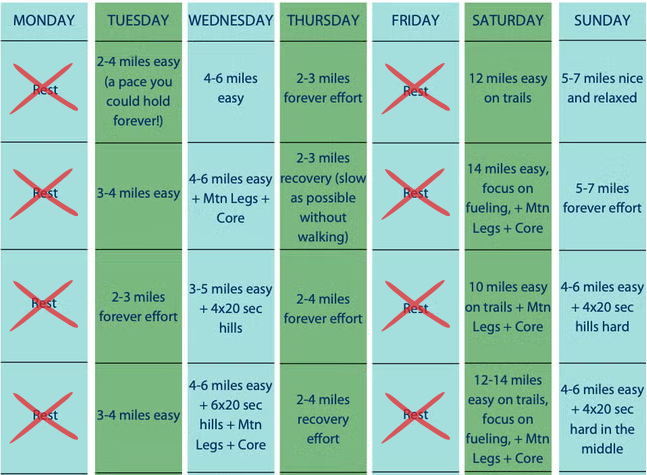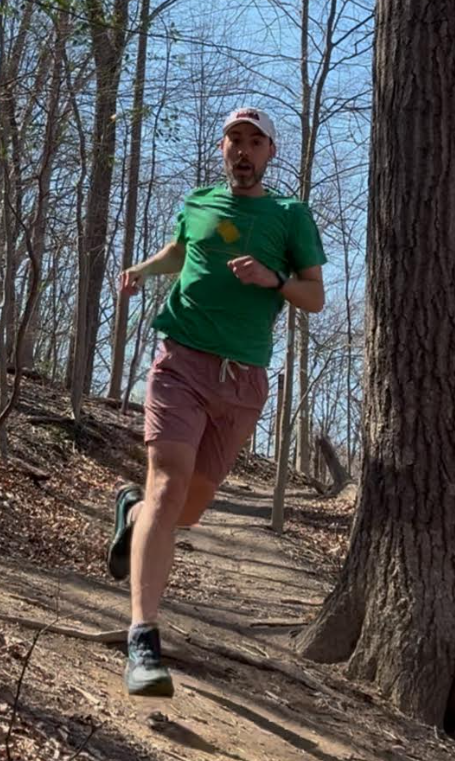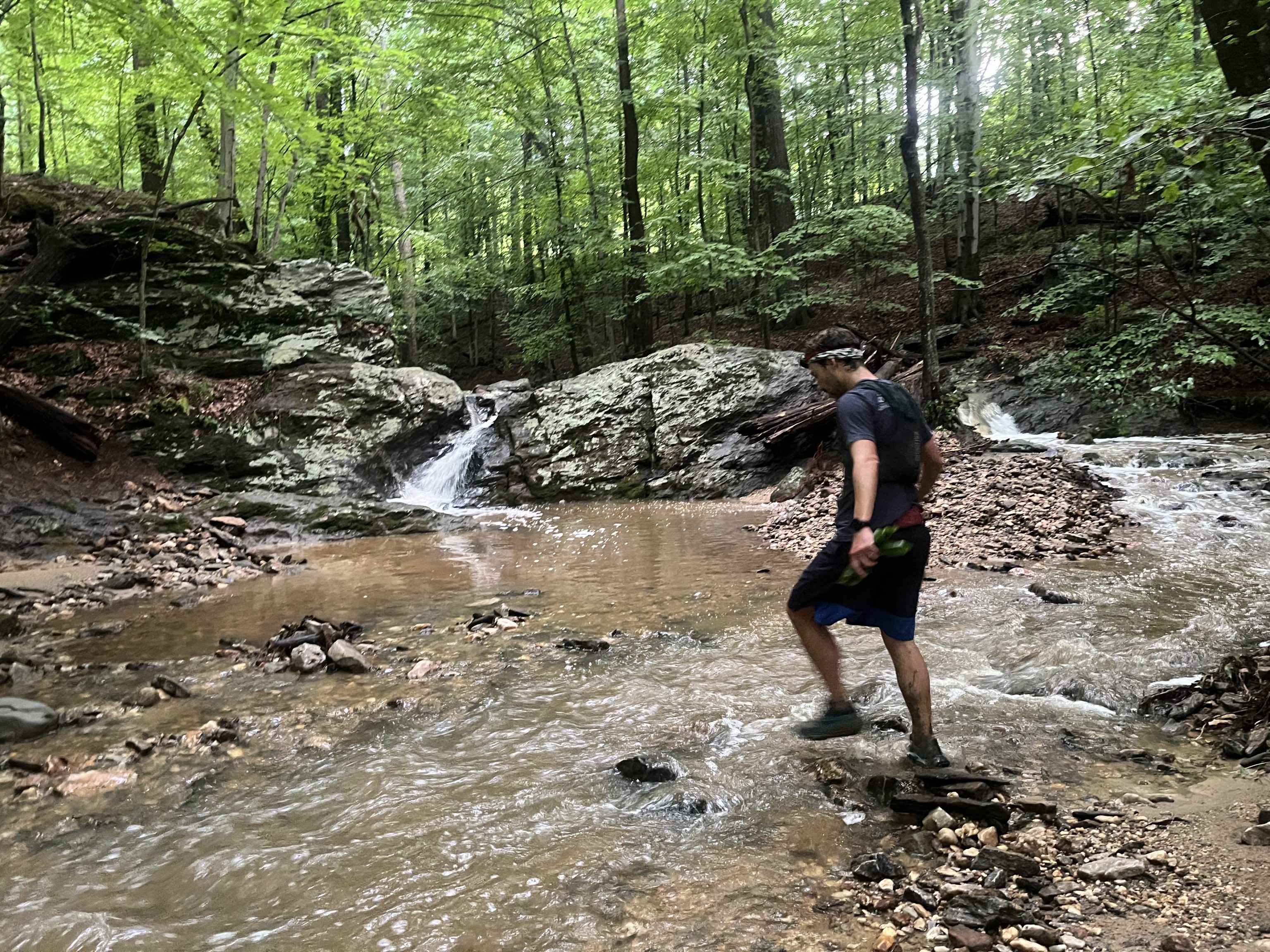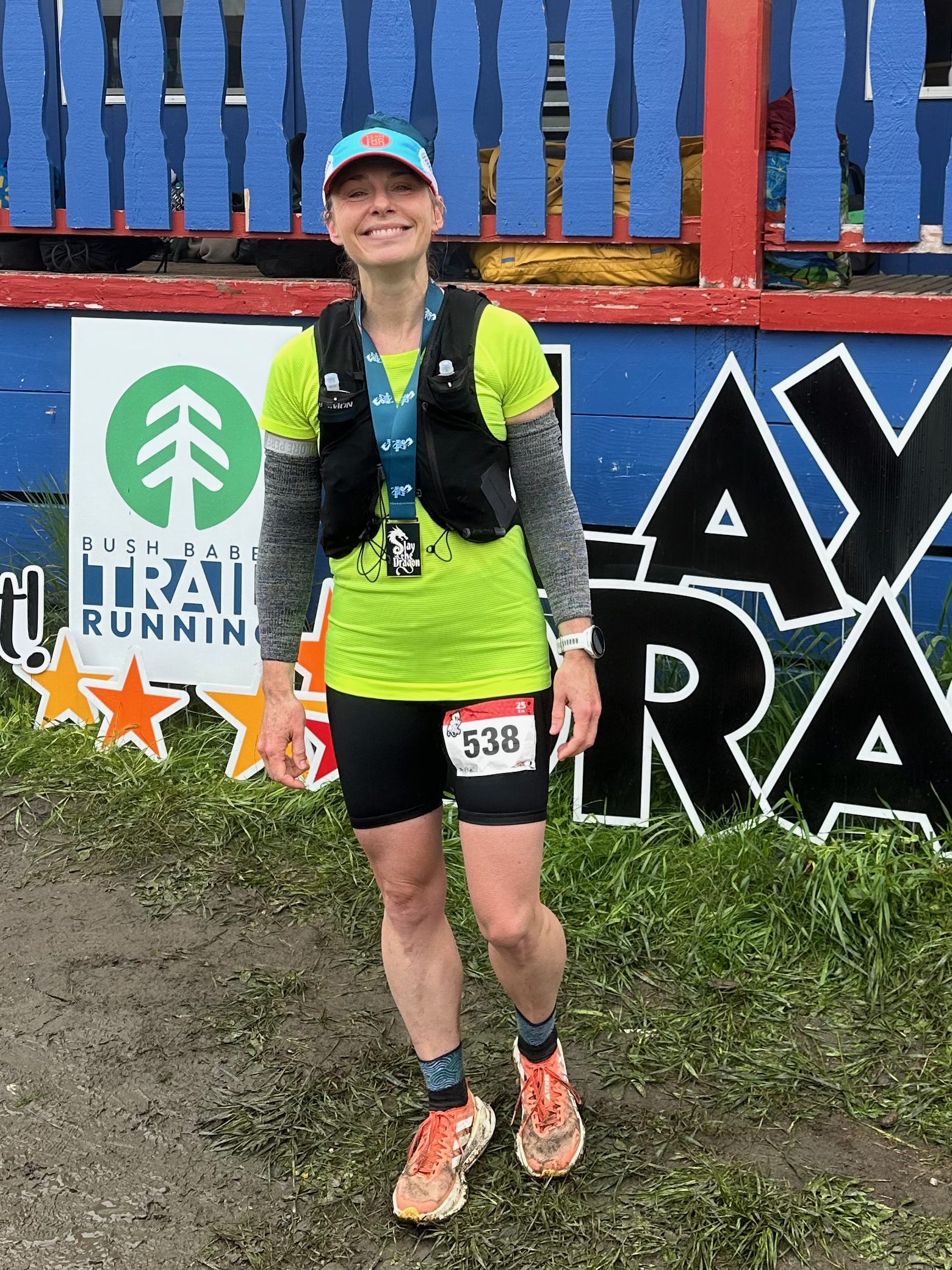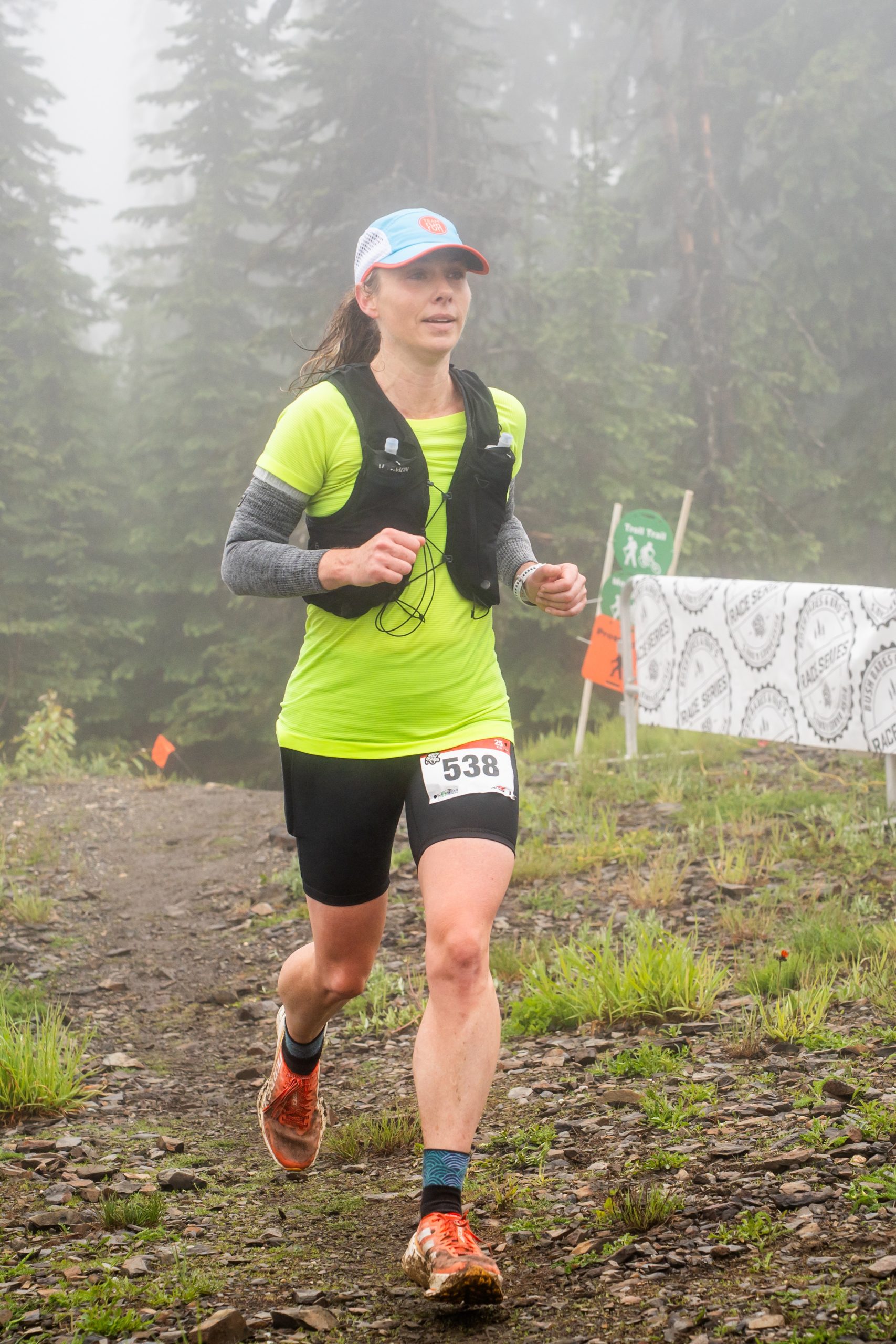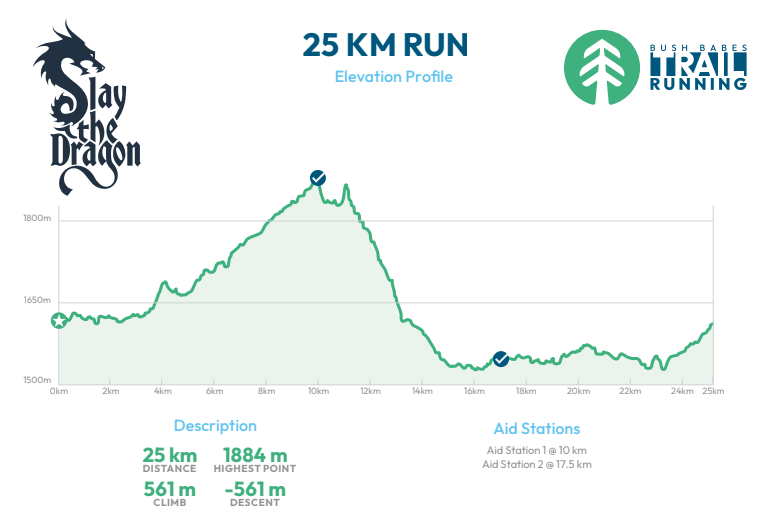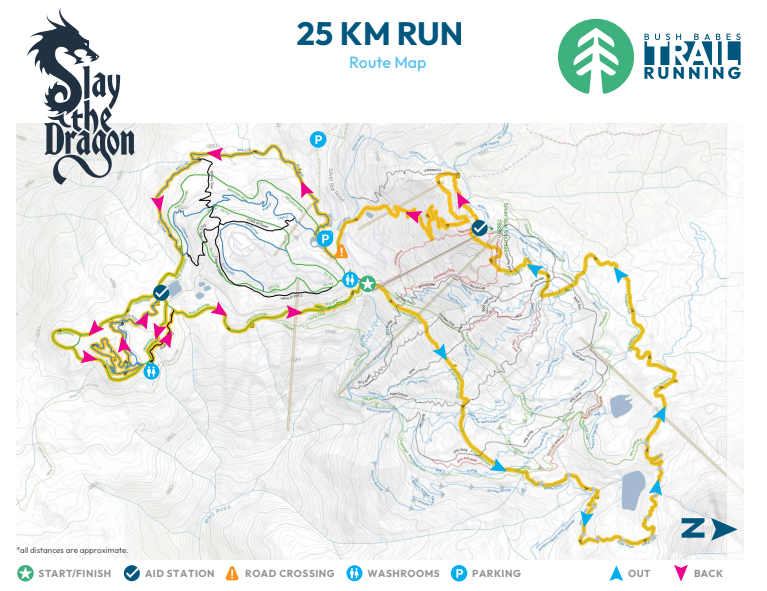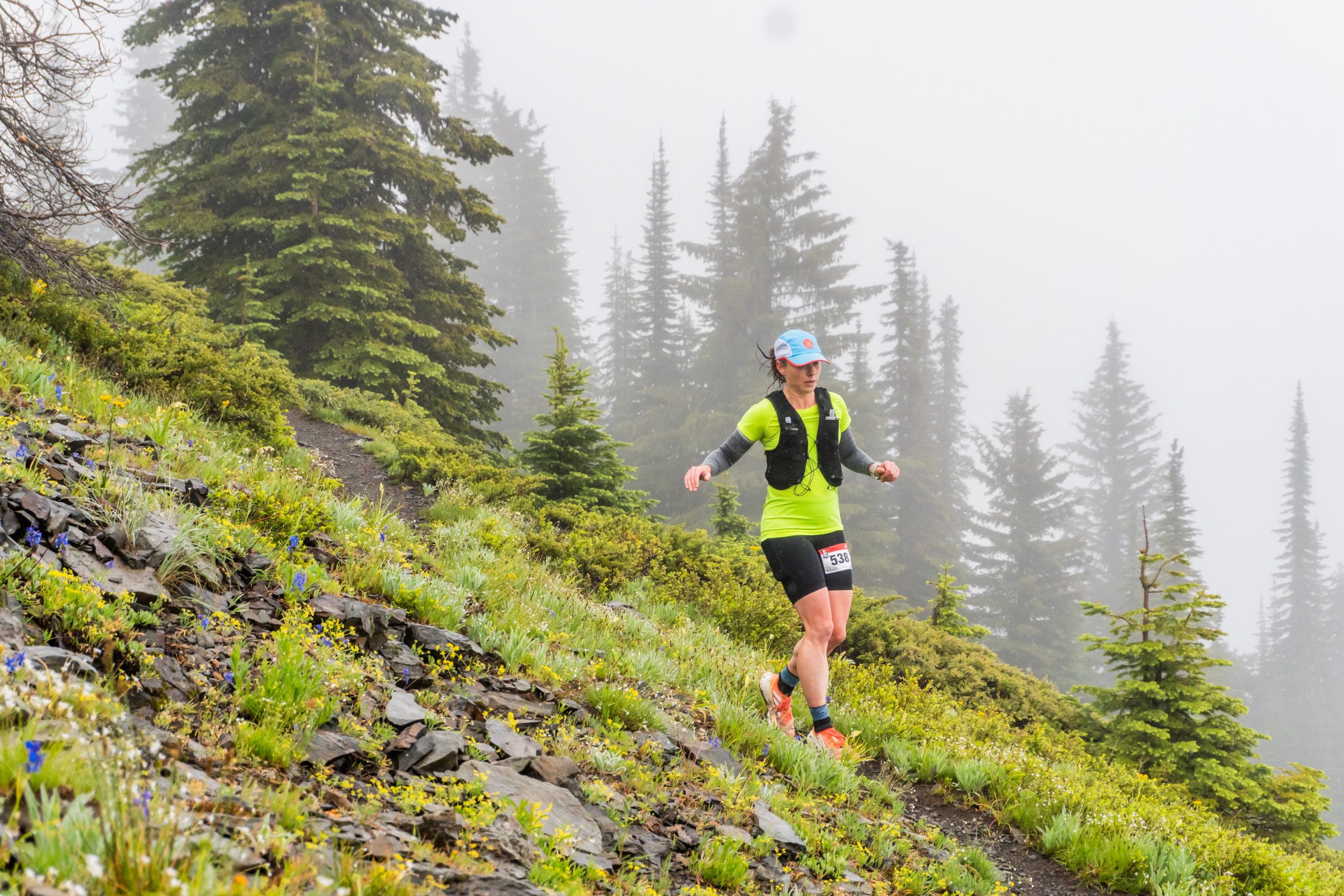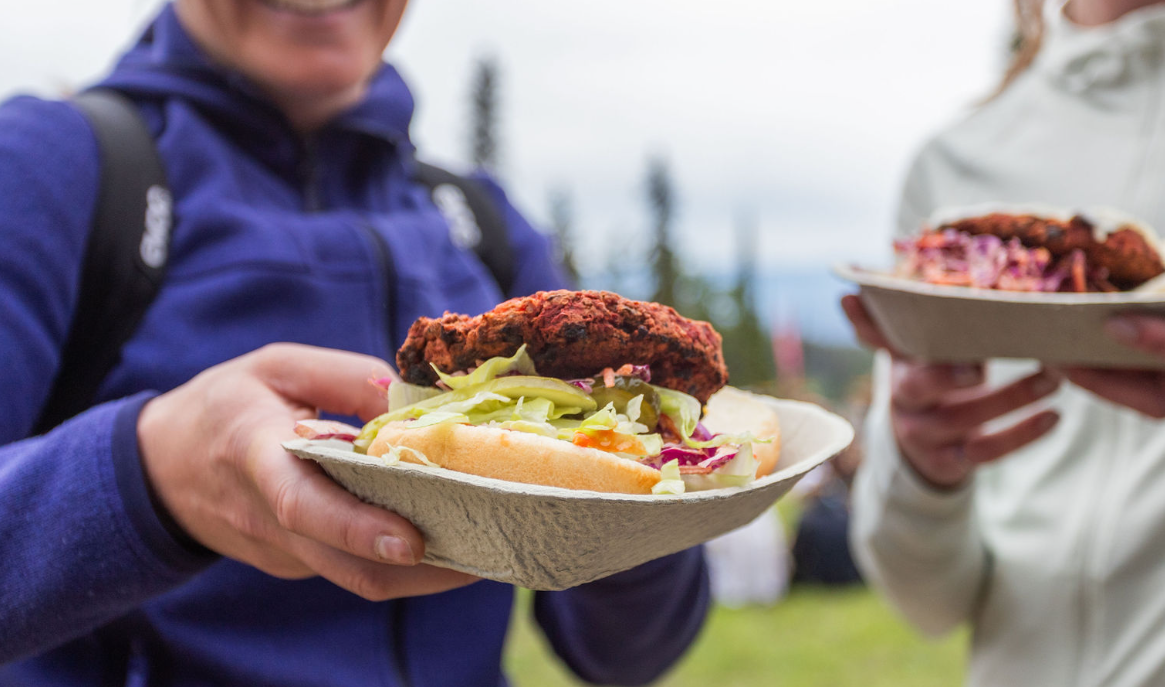Race: Grindstone 100 mile race by UTMB

Runner: TRR Coach Lukas Burrer
Race Date: 09/19/2025
Location: Natural Chimneys Park, VA
Result: 25:43:33, 8th overall and 3rd in age group
Strava link: https://strava.app.link/8zqeSaDGTWb
What aspects of the race did you like the most?
I liked that the Grindstone 100 is mostly on single track trails. Also, the 6pm start means everyone has to run through at least one full night, and this adds another challenge to the race.
Not so much – Aspects of the race that didn’t do it for you
The downside to all the single track was that some parts were pretty overgrown, making it harder to stay on pace.
Highlights of your race – What did you do well and enjoy about your race in particular?
The final miles are very smooth and runnable – a nice “treat” after 90+ miles of technical single track! It felt very good to drop the pace and finish the race strong. (Certainly not something you feel at the end of most 100 milers!)
Lessons for others – Share your pro-tips on the race to help the next runner
Above all, take the climbs easy! They are gnarly and long, so you need to measure your energy and effort appropriately.
Most important course specific knowledge to know about the race
The lollipop section (miles 53-66) of the Grindstone 100 course is very gnarly and tough to get through. Oh, and it’s 105.1 miles, not 100.
Aesthetics – Is it a pretty course?
Yes! The course is mostly on single track trails, providing continuous variety that keeps you motivated. And the upside to the gnarly climbs are the beautiful views you’re treated to at the top.
Difficulty – Is it a tough course?
Yes, undoubtedly so!!! Those climbs are tough, and the technical terrain makes it even harder! Plus, you gain 21,000 feet over the 105-mile course! Grindstone 100 is one of the most difficult 100-mile races in the US.

Organized and well run – Did it feel like a well-oiled machine or were they flying by the seat of their pants?
Yes! It’s a UTMB race, so it’s very well organized.
Competition – Is there a strong field?
Yes! Again, with it being a UTMB race, it will always attract a strong field of athletes trying to qualify for the UTMB finals in France.
Logistics – Does it require a special handshake, registration a year in advance, hotels all booked? Give us the low down on the nuts and bolts of making the race happen.
No major logistical hurdles, simply go to the website and sign up!

Note UTMB’s trail stewardship policy: all the Grindstone 100 racers are required to complete 8 hours of trail work prior to race day, which they submit via a Trail Work Form.
Aid Stations – Standard fare or anything special to know about the aid stations in terms of what’s available or when?
There are 15 aid stations throughout the Grindstone 100, 1 about every 6-8 miles, and you can have crew and/or drop bags at 5 of them. The offerings are standard, and Naak is the on-course nutrition and hydration brand. That said, the North River Gap aid station (which is also a crewable aid station) was the best, thanks to the variety of food options available!
Weather and typical race conditions
It was pretty hot and humid on race day this year! Therefore, I’d recommend asking your crew to have ice available at aid stations to stay cool.
Gear – Did you need anything special or is there anything you’d recommend for the next runner?
There is a mandatory gear list but, as far as UTMB races are concerned, it doesn’t list anything you shouldn’t already think to carry.
My #1 recommendation is poles! Bring poles, you won’t regret it!!
Spectators – Is this a friendly course for your friends?
There are a good number of crewed aid stations, meaning crew, friends, and spectators can see and support the runners more often than in a lot of 100-milers. However, trail ultramarathons are never the most spectator-friendly! There is a whole festival setup at the finish line area, perfect for spectators to await finishers.
How’s the Swag?
You get a nice 100-mile finishers belt buckle, race t-shirt, and picture from the park!
The Overall Score – How many stars do you give this race and do you recommend that others run it?
5/5! I would recommend the Grindstone 100 to anyone looking to gain some milestones for UTMB who likes technical and gnarly races.
For another tough 100-mile race report, check out: UTMB (Ultra-Trail du Mont-Blanc) Race Report – TRR Founder and Coach Matt Urbanski details his UTMB race: 108.1 miles with over 32,000 feet of vert and wild weather in the French Alps!

Lukas Burrer is a coach with Team RunRun originally from Germany, but now based in Atlanta, Georgia. He specializes in trail and ultrarunning, and loves helping athletes take on big challenges!









